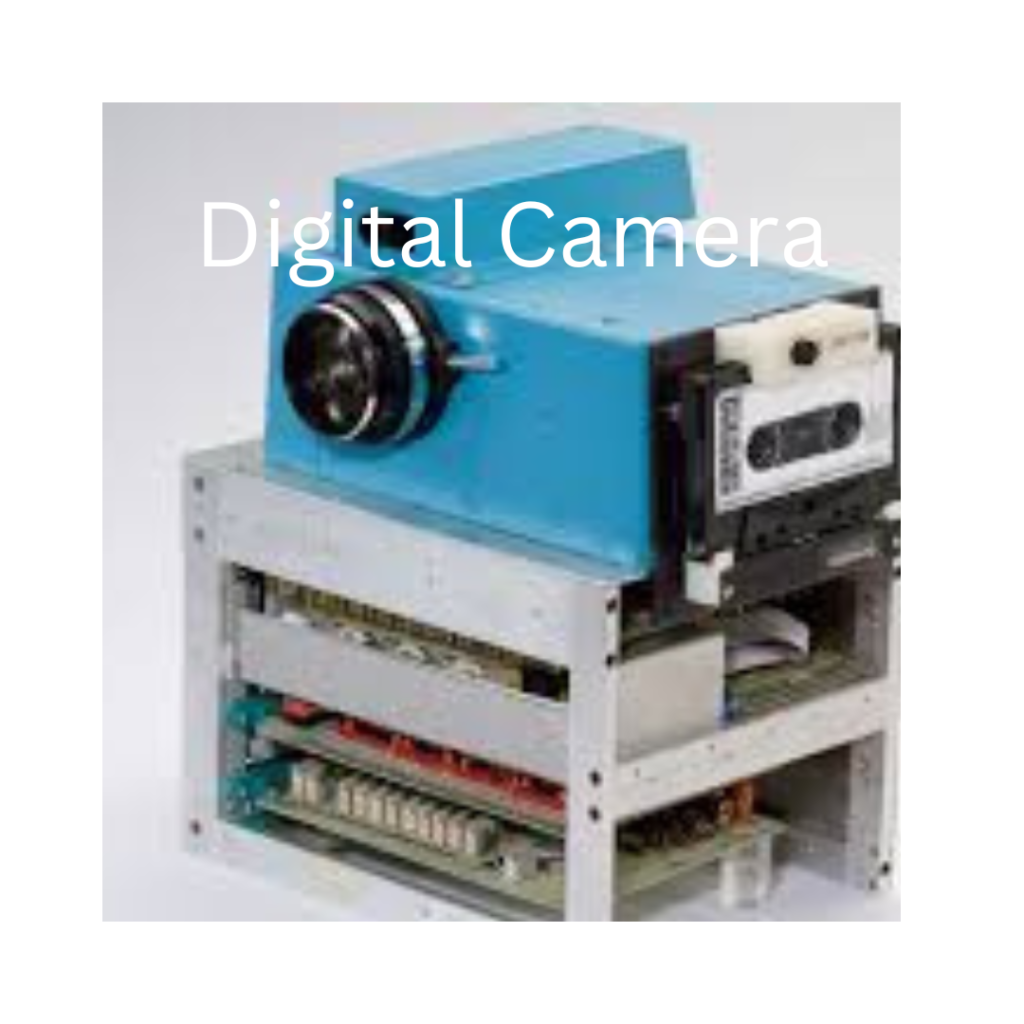Introduction
Digital cameras, initially reserved for professional photographers due to their high cost, became widely accessible to the public by the mid-to-late 1990s. Technological advancements not only popularized digital photography but also brought about significant cultural changes in the field. This article explores the evolution of digital cameras, key milestones, and their impact on photography and filmmaking.

The Birth of Digital Photography
In May 2000, Canon introduced the digital version of its best-selling “IXY” Advanced Photo System camera, the “IXY DIGITAL.” This new model featured a 2.11-megapixel CCD while maintaining the compact size of the original “IXY” camera.
Hollywood’s Transition to Digital
Hollywood began capturing films digitally in the 2000s, and by 2013, digitally shot films became more common than those produced on celluloid. Despite this transition, some large companies that once dominated the film camera market remain significant players today.
The First Consumer Digital Camera
The first digital camera available to consumers was the Dycam Model 1, launched in 1990. It allowed users to store digital pictures and connect directly to a PC for downloads.
Growth of the Digital Camera Market
Digital cameras saw a significant price drop from an average of $412 in 2000 to $91 in 2006. Their sales increased dramatically, with a 50% rise between 2000 and 2001 and a 60% rise between 2001 and 2002. By 2003, most mobile phones were equipped with built-in cameras.
Rise of DSLRs
The term DSLR, which stands for digital single-lens reflex camera, has become synonymous with digital cameras. DSLRs allow for interchangeable lenses on the same camera body, making them popular among photographers.
Introduction of Advanced Camcorders
In July 2004, the XL2 was introduced as a top-of-the-line digital camcorder model with an interchangeable lens, designed to replace conventional professional cameras for filming movies and commercials.
Historical Milestones
The world’s first digital camera was developed in 1975 by Eastman Kodak engineer Steven Sasson in Rochester, New York. This prototype weighed almost 4 kilograms and was roughly the size of a toaster.
National Inventors Hall of Fame Inductee
Steve Sasson, inventor of the digital camera, is celebrated for his innovative contributions. His early fascination with electronics and technology led him to create the groundbreaking digital camera.
The Shift to Digital Film
By 2017, 92% of films were shot digitally, with only 24 major films in 2018 being shot on 35mm. Companies like Sony, Panasonic, JVC, and Canon now offer a variety of choices for shooting high-definition video. Traditional film formats are becoming obsolete as digital projection technology advances.
Early Developments in Digital Imaging
The field of image processing began in 1957 when Russell Kirsch created the first-ever digital image using a rotating-drum scanner at NIST. This pioneering work laid the foundation for modern digital imaging techniques.
Popularity and Accessibility
By the late 1990s, digital cameras gained significant popularity and were widely available, replacing film cameras as the preferred choice for many photographers.
The Impact of Video Technology
In 1995, Panasonic and Sony introduced digital recording technology, marking the beginning of a rapid evolution in digital film. Digital video camcorders transformed the industry, making high-quality video recording accessible to a broader audience.
DSLR vs. Mirrorless Cameras
DSLR cameras provide a more accurate and natural viewing experience through optical viewfinders, while mirrorless cameras offer a more informative and adaptable view. The choice between the two often depends on personal preference.
Comparison with Smartphone Cameras
While iPhones take great photos, DSLR cameras offer superior image quality, especially when zoomed in. This distinction becomes evident when comparing photos taken with both devices.
Milestones in Digital Camera Development
- 1988: Fujifilm introduced the FUJIX DS-1P, the first fully digital camera using a semiconductor memory card.
- 1995: The “EOS DCS” line of professional digital cameras was released jointly by Canon and Eastman Kodak.
- 1996: Canon’s “PowerShot 600,” a model for general users, hit the market.
Conclusion
The journey from the first digital camera prototype to the advanced digital cameras of today highlights the incredible technological progress in photography. As digital technology continues to evolve, it will be fascinating to see how it shapes the future of photography and filmmaking.
Table: Key Milestones in Digital Camera Development
| Year | Milestone |
|---|---|
| 1975 | First digital camera prototype by Steven Sasson |
| 1988 | Fujifilm FUJIX DS-1P introduced |
| 1990 | Dycam Model 1, first consumer digital camera |
| 1995 | Digital recording technology introduced by Panasonic and Sony |
| 1996 | Canon “PowerShot 600” released |
| 2000 | Canon “IXY DIGITAL” launched |
| 2004 | XL2 digital camcorder introduced |
| 2013 | Digitally shot films become more common than celluloid |
| 2017 | 92% of films shot digitally |
This timeline illustrates the rapid advancements in digital camera technology and its widespread adoption across various fields.
Discover more from
Subscribe to get the latest posts sent to your email.





